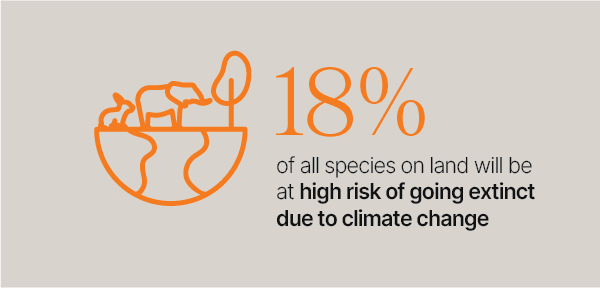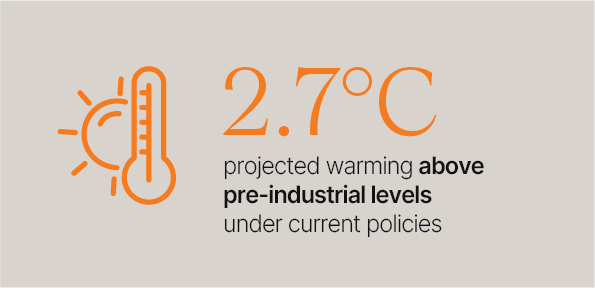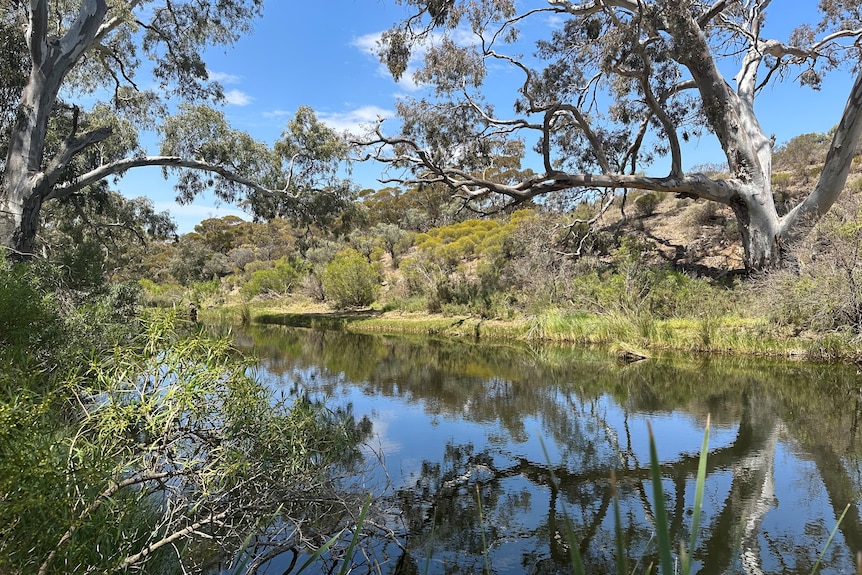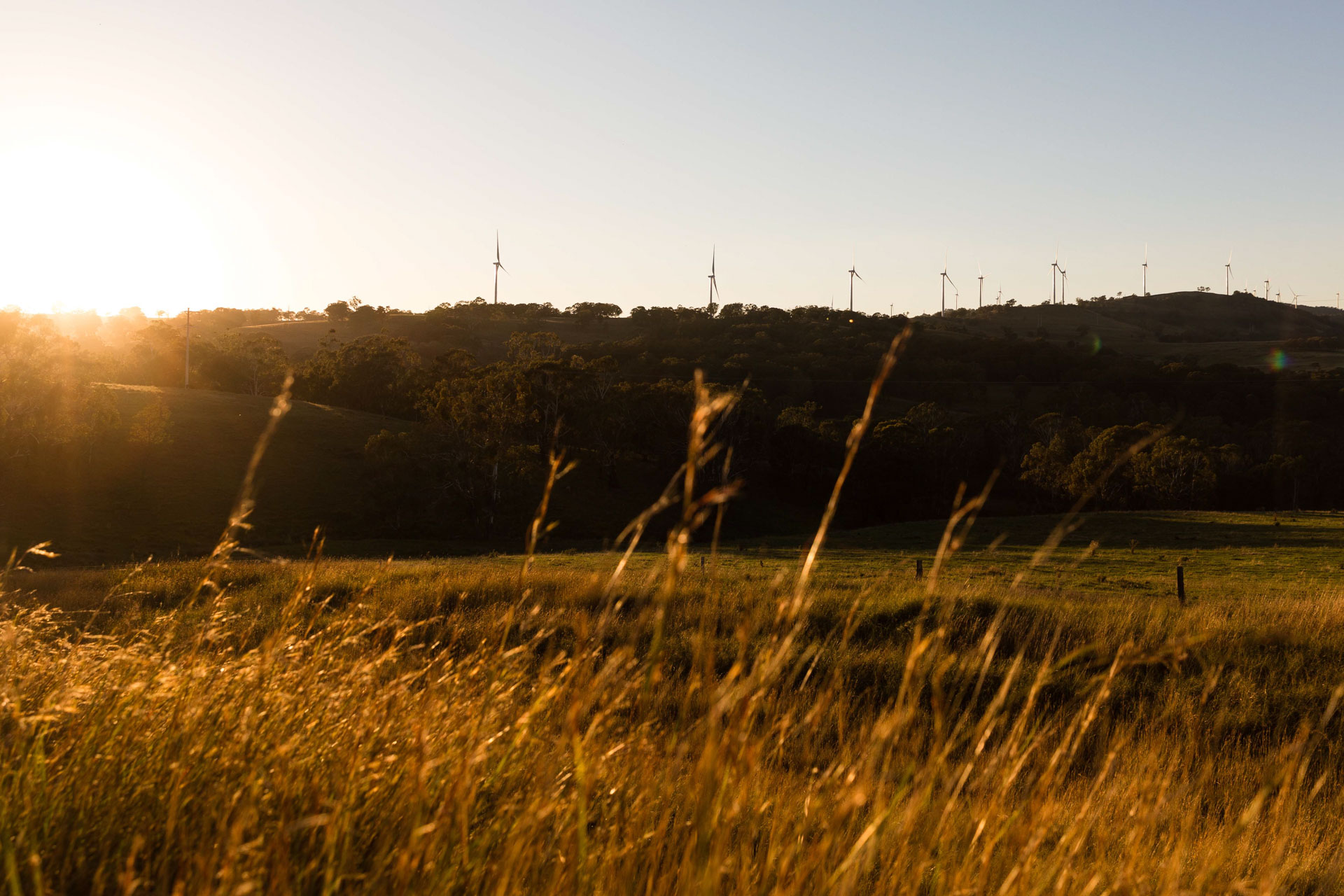
What are the environmental benefits of renewables?
Climate change, driven by the burning of coal, oil and gas, is the biggest threat to Australia’s biodiversity and clean energy is the best solution to reduce emissions. Renewable energy projects reduce pollution, increase biodiversity and result in cleaner water.
Do renewables impact biodiversity?
Climate change is the biggest threat to biodiversity. Extreme weather events supercharged by climate change are the most significant driver of native plant and animal decline in Australia. Climate change increases the severity and regularity of bushfires and floods and the length of droughts and heatwaves.
One of the fastest ways to prevent the worst impacts of climate change and extreme weather events is to rapidly replace electricity produced through burning fossil fuels like coal and gas, with clean energy generated from wind, solar and hydro and distributed via energy storage.
What are the environmental risks of renewable energy development?
While renewable energy is generally considered environmentally friendly, construction and operation can pose risks to local ecosystems and wildlife. These impacts include habitat fragmentation through land clearing and disturbance to wildlife during construction and operation. Through careful planning, technology advancements, strategic site selection, and mitigation measures, renewable energy projects in Australia can and do minimise their impact.
All renewable energy projects go through rigorous environmental assessments by government agencies, which assess projects against published guidelines and regulatory requirements.

Are wind farms considered a threat to birds?
Within Australia, the greatest threats to birds are now from climate change and extreme weather such as drought, fire and heatwaves. Further threats include invasive species such as cats and foxes, habitat destruction and degradation. The small impact of wind turbines in specific locations needs to be balanced against how renewable energy mitigates and reduces the worst impacts of climate change.
How do wind farms reduce their impact on birds?
In addition to choosing an appropriate site to avoid causing harm, wind farm operators are required to undertake detailed surveys so any potential impact is well understood and assessed prior to construction. Once in operation, wind farms are required to monitor for impacts and may need to implement an adaptative management plan that outlines what else can be done to avoid or reduce impact.
Are renewable energy development applications assessed?
All renewable energy development applications are assessed by government agencies for the potential or actual impact they will have on the environment in which they are located. This assessment is a legal requirement in every Australian state and territory.
What are some key issues government departments will focus on?
Assessment teams determine whether a renewable energy project will have an impact on threatened plants and animals through, for example, proximity to habitats, land clearing or, in the case of wind farms, birds and bats colliding with wind turbines. These impact assessments are made using criteria set out in legislation and guidelines. Projects are often required to offset the expected impact and can achieve this by protecting another parcel of land or by delivering environmental projects that help the overall condition of a specific species.
How does site selection, design and management reduce impact?
Community engagement and stakeholder consultation is integral to ensuring that clean energy projects are developed and implemented in a way that balances biodiversity impacts and in many states is written into law. By involving Traditional Owners, local communities and environmental organisations in the design and development process, developers can gain valuable insights into biodiversity concerns and identify opportunities for collaboration and co-management of the surrounding natural environment.
What do clean energy projects signify for conservation and sustainability?
Despite the potential biodiversity impacts associated with clean energy projects, there is growing recognition of their role in supporting conservation objectives and advancing sustainability goals. By prioritising biodiversity conservation and incorporating mitigation measures into project planning and implementation, renewable energy projects can contribute to both energy security and environmental protection. One example could be a group of wind farm operators investing in a program to eradicate local feral animals that are the main threat to a threatened bird species.
CASE STUDY
Making a new national park in South Australia
To satisfy its legal requirement to offset native vegetation impacts for a South Australian wind farm project, renewable energy company Neoen bought 1,000 hectares of private land at World’s End Gorge and gifted it to the South Australian Government to turn into a national park. Neoen will contribute to conservation efforts in the national park for the 30-year lifespan of the wind farm and continue to collaborate with Ngadjuri traditional owners, the community reference group and the South Australian Government.

How does site selection, design and management reduce impact?
1. Site selection and design:
- By identifying sites with minimal environmental value and low biodiversity sensitivity, developers can reduce the risk of environmental impact. Projects spend years surveying possible locations to identify sensitive environment and biodiversity values. The data obtained during surveys informs the design of the project to minimise impact. For example, choosing precise locations for individual wind turbines to avoid birds and bats. Additionally, implementing best management practices during construction and operation, such as minimising noise and light pollution, can reduce disturbances to sensitive species.
2. Minimising land clearance:
It is integral for developers to demonstrate how they will avoid, minimise and mitigate actual or potential risks to native plants and animals by reducing the amount of land that needs to be cleared.
3. Restoration:
Measures such as habitat restoration, revegetation and reconnecting or creating new wildlife corridors can help reduce habitat fragmentation and maintain connectivity for wildlife populations.
4. Environmental offset:
If projects can’t avoid an impact, then it’s often a requirement they offset this loss. This may entail establishing a specific area of land in the same region for the impacted species or creating an entirely new one and actively managing that parcel to ensure the desired outcome is being achieved.
Are communities consulted about renewable energy projects?
Community engagement and stakeholder consultation is integral to ensuring that clean energy projects are developed and implemented in a way that balances biodiversity impacts and in many states is written into law. By involving Traditional Owners, local communities and environmental organisations in the design and development process, developers can gain valuable insights into biodiversity concerns and identify opportunities for collaboration and co-management of the surrounding natural environment.
What do clean energy projects signify for conservation and sustainability?
Despite the potential biodiversity impacts associated with clean energy projects, there is growing recognition of their role in supporting conservation objectives and advancing sustainability goals. By prioritising biodiversity conservation and incorporating mitigation measures into project planning and implementation, renewable energy projects can contribute to both energy security and environmental protection. One example could be a group of wind farm operators investing in a program to eradicate local feral animals that are the main threat to a threatened bird species

